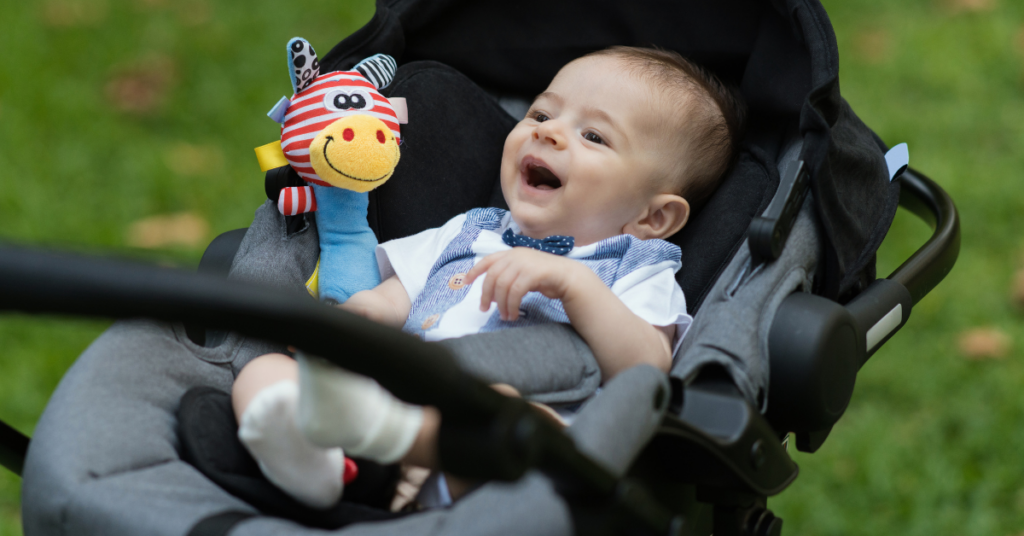When can a baby be placed in a stroller seat, and what should be considered?
It often happens around 5-6 months of age that the baby no longer enjoys lying on their back in the stroller, but they are still unable to maintain sitting balance on their own. Awake periods start to lengthen, and the baby begins to show more interest in the surrounding environment, so walking with just a lying (and sleeping) baby is no longer an option. So how can you go outside with a baby who still can’t sit up on their own? Physiotherapist and Samm-sammult founder Reeli Tamme shares her recommendations.

If the baby is not yet sitting on their own, they should be placed in a semi-reclined position in the stroller. This can be done when the baby has good enough head control, meaning their head doesn’t slump forward onto their chest. My personal recommendation is not to place a baby in a semi-reclined position in the stroller if they are not yet rolling from back to tummy. Additionally, it’s important to make sure the baby doesn’t lean to one side. If needed, support the baby around the hips with small rolled towels (if the stroller doesn’t provide enough support).
I especially recommend being cautious when transitioning to a more vertical position for babies who had asymmetry in head control or body alignment during their first months. In a vertical position, muscle tone increases, and asymmetry may worsen, with a higher likelihood of the baby slumping in the stroller.
If the baby is not yet ready for a semi-reclined position in terms of movement development but there’s a need or desire to take longer walks while they’re awake, I suggest using a baby sling, carrier, or car seat (on the stroller frame) as an alternative during this stage of development.
If you notice that the baby is straining in a semi-reclined position, it’s often a sign that the backrest can be raised slightly higher. However, if the baby is not yet sitting on their own but is straining a lot, I do not recommend adjusting the backrest to a fully upright position. In this case, use other alternatives temporarily.
Once the baby can sit on a flat surface and maintain balance without support, you can switch to a sitting position in the stroller. However, it’s usually a good idea to provide extra support around the hips with small rolled towels on either side for the first two to three weeks. Also, keep in mind that sitting in a moving stroller is a bigger challenge than sitting on the floor. Therefore, a beginner sitter in the stroller should sit for 10-15 minutes at a time, no more.
Important parameters to consider when choosing a stroller:
• The backrest should be adjustable from fully reclined to a 90-degree angle. If the baby doesn’t often use the stroller for sleeping, a fully reclined position is not strictly necessary. However, many strollers leave the backrest in a semi-reclined position, which may cause the baby to strain forward more.
• The angle between the backrest and the seat should be adjustable. Some strollers allow the backrest to be made parallel to the ground, but the baby may not be able to straighten their hips while lying down.
• The baby should be able to face both forward and backward in the stroller. If only one direction is possible, I personally recommend choosing the backward-facing option.
You don’t have Willuwalk yet? You can get it here.
